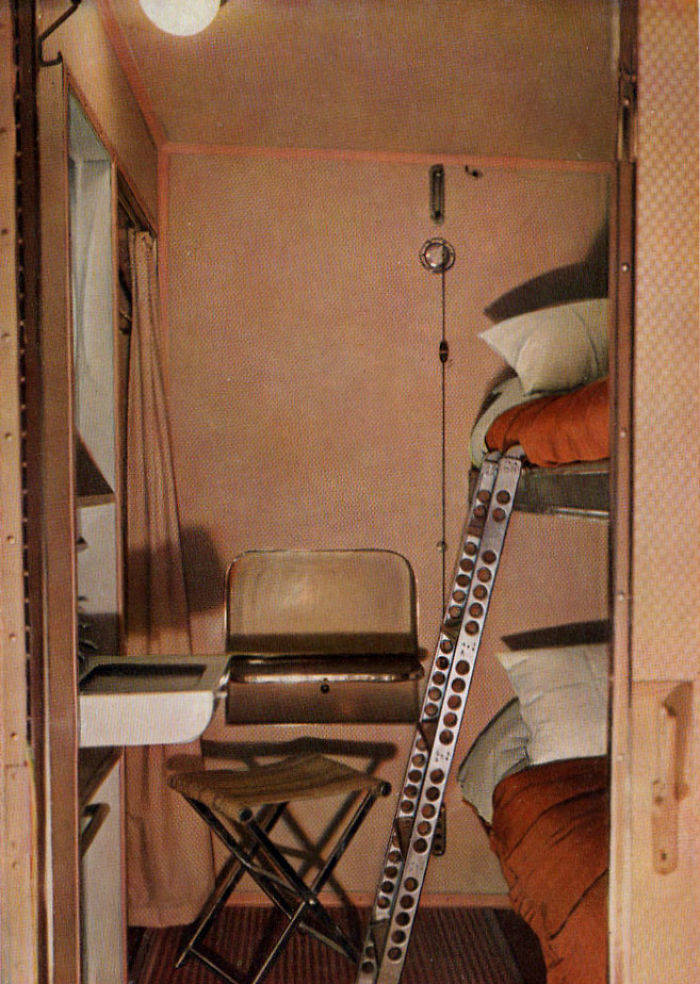Passenger Cabins on Hindenburg

The Hindenburg was dubbed the ‘world’s first flying hotel.’ Unlike Graf Zeppelin, it contained the passenger accommodation within the hull of the airship. The passenger space was spread over two decks, known as ‘A Deck’ and ‘B Deck.’
The aircraft was originally designed to have 25 double-berthed cabins at the center of A Deck, accommodating 50 passengers. After its inaugural 1936 season, however, 9 more cabins were added to B Deck for 20 extra passengers.
The walls and doors of the cabins were made of a thin layer of lightweight foam covered by fabric. The living spaces came in one of three color schemes: light blue, grey, or beige. Each A Deck cabin had one lower berth which was fixed in place, and one upper berth which the passengers could fold against the wall if they needed more space.
None of the cabins, however, had toilet facilities. Both male and female toilets were available on B Deck below, as was a single shower with a weak stream of water, “more like that from a seltzer bottle” than a shower, according to Charles Rosendahl.